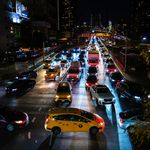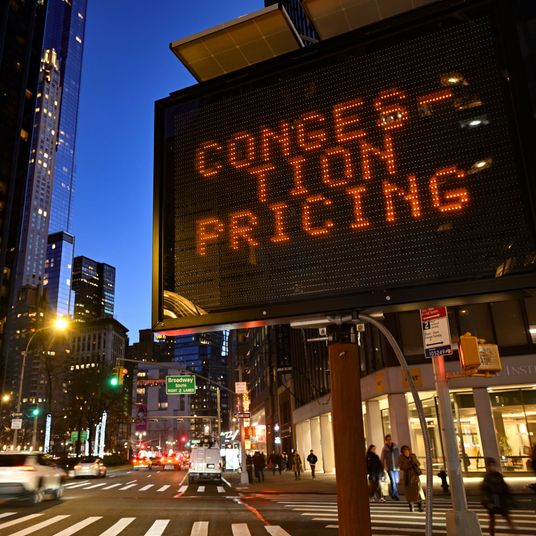When even a Fox News readers’ poll puts support for the Occupy Wall Street protests at more than 60 percent, it’s safe to say we have something of a movement on our hands. The demonstrations are approaching the one-month mark stronger than ever, expanding beyond New York to cities across the world. With no end in sight (but with winter on its way), one question keeps coming up: “How is this going to end?”
Mark Naison knows a few things about protest movements. A political activist and professor in Fordham’s Urban and African-American Studies programs, Naison attended Columbia University in the sixties, where he joined the Congress of Racial Equality and Students for a Democratic Society. In 1968, he was part of a group that occupied Columbia buildings in opposition to the construction of a gym in Morningside Park. (It was never built.)
And yet upon his first visit to Zuccotti Park, Naison was confused. “It was the first time in my life that I had been at a demonstration that I didn’t recognize a single person. It was very different — overwhelmingly white, countercultural, educated, and unconnected to the major movements in New York City,” he noticed. But since, he salutes the group’s exponential growth: “This now has catalyzed a huge variety of people who are dissatisfied with the way things are going politically, rampant unemployment, the increasing concentration of wealth at the top, and with the Obama administration. What I see here is a coalition of a variety of different forces concerned with social and economic justice issues that I haven’t seen since the sixties. And it caught everybody by surprise!”
Todd Gitlin, also an experienced activist, served as president of the Students for a Democratic Society in the early sixties, protesting the Vietnam War and taking part in a Chase Manhattan Bank sit-in against South African apartheid in the spring of 1965. He also credits Occupy Wall Street’s “many moving parts” and cites five forces that will dictate the path it takes moving forward: There are the people who initially organized and are sustaining it; the “outer movement,” which includes older activists, unions, and community organizations; the Democratic politicians who have reacted positively; the political opposition, like Eric Cantor and his ilk; and finally, the police. “All of these forces can move these vectors in different directions,” Gitlin says, but there are a few leading possibilities:
1. The Democrats Ride the Wave
Politicians have already started to associate themselves with the demonstrators (see: underdog NYC mayoral candidate Scott Stringer), and that’s likely to increase as we get closer to Election Day 2012. According to Gitlin, “a certain camp of Democrats can try to benefit from this newly unleashed energy with something like a Contract with America, or a roster of demands that would appeal to some number of demonstrators.”
This could include incumbents in Congress, like Nancy Pelosi, but might be more effective for those running as insurgents, like Elizabeth Warren in Massachusetts. “It doesn’t seem like a possibility that any significant legislation can be passed anytime soon because of the Republican lock in Congress,” says Gitlin. “But the energy of the movement can be put to use within normal politics depending on the adroitness of politicians. Will they make efforts to turn these people from marchers to campaigners?”
Both Gitlin and Naison say they’ve heard grumbles at the protests about voter suppression and wonder if some subset of the demonstrators might be mobilized into a “get out the vote” movement in support of Democrats. Such a path would certainly be met with disgruntlement from the core of the demonstrators, some of whom are already voicing opposition to politicians “co-opting” the movement. But Gitlin says such a track should be seen as a success.
2. A Third Party Rises
The worst outcome, according to Gitlin, would be the increased legitimacy of a third party that peels off left-wing voters from the Democrats. “Two words,” says Gitlin. “Ralph Nader. It would be a disaster, as it was in 2000.”
Naison is less sure the movement’s effects will be felt that quickly and estimates, “This is going to take three or five or even ten years to see its influences materialize.”
3. The Movement Splinters
Matt Taibbi noted that “the time is rapidly approaching when the movement is going to have to offer concrete solutions to the problems posed by Wall Street.” But agreeing on a list of demands could be more than the fledgling movement can bear at this point in its development.
“It’s conceivable that concrete demands could come,” Gitlin explains, “if somebody distilled a program and said they agree to support every candidate who supports the program and oppose those who don’t. That could be a powerful vector in elections.” (See: the tea party.) But alternatively, “There is a utopian thrust to the encampments, who quite explicitly say, ‘We don’t make demands, we are the demands.’ They have a community here and want to sustain it. All these forces will be contending.”
A more extreme group could also materialize from within the Occupy Wall Street ranks, Gitlin said. “There are always those who want to ratchet up the militancy and if the police take the bait, you could have some ugly incidents that diminish the repute the movement enjoys right now. It doesn’t take a lot of people to do that. It is disgraceful to say that there are mobs at work now, but there could be. It wouldn’t be surprising, but it would be disruptive.”
4. External Forces Take Hold
Friday is already looking like it will be tense, as the city plans to clear out protesters, purportedly to clean the park, but also to bar protesters from bringing in sleeping bags and other gear when they return. Also disruptive, assuming the park’s owners don’t act first, will be the weather. Winter is coming, and with the ban on building structures the protesters will be pressed to hold their ground against the elements. “The most important thing is keeping the movement together in operational spaces,” Naison says. “The space issue is going to be key. The movement keeps building, but you’re running this race against time in terms of keeping something outdoors.” He floated the possibility of squatting in empty luxury condos or commercial spaces, as occurred in Germany after the fall of the Berlin Wall. The protesters could also find housing with sympathetic church groups.
While the weather may seem like a trivial issue in the face of Occupy Wall Street’s growing momentum and legitimacy, the biggest risk to the demonstrations’ proliferation may be if “the middle-class kids just get tired and go home. That would take a lot of steam out of it,” Naison says. “The only problem is they might not have nice middle-class lives to go back to anymore. The economy isn’t improving. What do they have as an alternative?”
In Gitlin’s view, “It’s conceivable that the movement could hibernate like a bear for the winter months and reemerge. Then it might have a different agenda depending on political arrangements. But the insurgent energy will still be there.”
Update: A potential face-off was averted this morning when the Bloomberg administration opted at the eleventh hour not to begin clearing and cleaning Zuccotti Park, where more than a thousand demonstrators had gathered “to defend the occupation from eviction.”





























